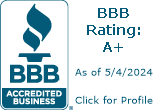Operational Excellence: How to Achieve and Sustain It with Technology
Commit Your Organization to Ongoing Improvement

Operational excellence is often elusive, with multiple barriers getting in the way of organizations and teams seeking to do work better. A lack of operating excellence, whether adding precision to manufacturing processes, better system integration, enhanced products or services development, or general process improvements, can hold back an organization.
Without a sustained focus on achieving excellence, organizations will be challenged to create value for the customer or improve company culture.
What Is Operational Excellence?
Operational excellence is a formal process to improve quality, organization processes, pricing, customer experiences, and internal workflows. It’s a commitment to a constant state of work designed to maximize outputs with minimal inputs. It is the embodiment of the notion of doing more with less.
Operational excellence is different but similar to continuous improvement. Continuous improvement is an ongoing evaluation that seeks to improve processes, tools, and systems.
In contrast, to define operational excellence in an organization, the organization must commit to achieving a state where efficiency is ingrained. The organization must reach and maintain a culture that becomes the norm. It’s about what an organization does to create a culture that allows it to stay competitive at every turn while eliminating waste and improving how work is done.
Organizations that want to achieve excellence in operations often have trouble getting there. Many potential barriers can hinder or slow down critical business processes. Organizational silos, data hoarding, lack of shared knowledge, lack of leadership buy-in, and poor planning can stall or derail well-intentioned initiatives.
Those challenges are why leadership commitment and communication are essential to ensuring the entire organization commits to the effort.
What Are the Benefits?
A commitment to excellence helps an organization do better across the enterprise. Here are some of the core benefits:
- Increased Quality. Your products and services will constantly improve when you create more efficient operations. You’ll have streamlined systems, tools, and processes that reduce waste, mistakes, and rework.
- Cost Reduction. It helps organizations use fewer resources – materials, personnel, and time. As a result, the cost per unit for every product or service produced is less.
- Better Decision-Making. Predicated on better-informed processes. With more data to inform how effective operations are, leaders can make better decisions in the moment of need. Operational excellence should focus on data collection, storage, reporting, and real-time data use.
- Increased Employee Retention and Recruitment. When employees can help improve systems and operations, they will be more satisfied with their work and their role. When employees are more satisfied, they’re more likely to stay with the organization. Happy employees and work teams help recruit new employees, too.
- Improved Customer Relations. With less time spent on inefficient operations, organizations can focus on more critical tasks that delight and engage customers. Better products, designed and produced well, mean more customer satisfaction and more extended customer lifetime revenue.
What Are the Core Principles?
How does an organization adapt a mindset that reaches and sustains excellence in operations? It can be challenging to shift an organizational mindset to one that focuses on striving for improvement.
That's because building an organization focused on long-term sustainable growth is hard. It takes an institutional commitment to high-quality problem-solving and critical thinking.
Here are ten principles for achieving operational excellence:
1. Respect Every Individual
Begin with a commitment to value and respect each individual. This goes for customers, colleagues, and partners alike. Respectful actions help employees feel valued and heard, and customers feel appreciated and understood in their questions and needs.
2. Lead with Humility
A humble approach to work helps to reduce power dynamics, foster respect, and encourage communication and collaboration. For managers, it means listening to the insights and needs of employees, understanding what they need for success, and learning from them.
It also means giving feedback, receiving it willingly, and learning from it. These actions forge a culture of trust where employees can work without fear of recrimination.
3. Seek Perfection
Admittedly, perfection is a lofty goal. However, pursuing perfection is the best way to get as close to it as possible. Without aspiring for perfection, more imperfect procedures and outcomes are acceptable.
A commitment to perfection means looking for root causes, not just temporary fixes. It’s about simplifying processes, reducing waste, and assuring quality at the source.
4. Focus on Scientific Thinking
Logic, facts, and data must persist in our operations. Embracing the scientific method – creating hypotheses, developing experiments, and understanding results – is an approach that will be objective, impartial, and fact-based. Experimentation should be embraced and encouraged, allowing staff to fail and learn from those failures to improve broader objectives.
5. Examining Process
At its heart, operational excellence is all about fine-tuning processes across the organization. “Process” can become complex quickly, with organizations facing workflows that cross departments and can break down silos.
As organizations look at processes, they must dive down to the root causes of challenges, commit to changing, implement and test solutions, and evolve as the facts present themselves.
6. Commit to Quality at the Source
When processes are examined, it’s essential to look at every component, every contingency, and every element. When looking at the various pieces of a process or workflow, the organization must commit to using the best possible resources, materials, and data to inform improvements.
When breaking down each part of a process, employees should be encouraged to stop and make corrections before moving on.
Admittedly, a commitment to quality takes time and energy. However, the commitment is essential. And when excellence is achieved, the organization will be positioned to maintain, grow and improve processes in the future.
7. Pull and Flow Value
Distorted senses of demand create waste and uneven work processes and workflows. It’s a problematic approach that plagues many inefficient organizations. Instead, business processes can optimize the value proposition to generate value in response to direct consumer demand.
With a clear understanding of demand, an unimpeded, continuous flow can be focused on high-revenue outcomes. In doing so, organizations will develop products and services to meet customer demand.
In addition, resources are available when needed and acquired in response to well-reasoned, well-informed demand projections.
8. Systematic Thinking
Systematic thinking is an approach that focuses on the big picture. It takes into account interdependencies and relationships when looking at processes and operations.
Processes are not looked at in a vacuum. Instead, they are evaluated based on how departments, personnel, and other processes interact with what is under the microscope.
When taking a systematic approach, process improvement teams look at the value change from beginning to end, documenting and analyzing how interconnected processes and workflows are.
There are multiple advantages to an approach focused on systematic thinking. It’s an ideal way to break down silos that inevitably exist within the organization. It can also lift barriers that slow information flows, approvals, and contingencies that can complicate processes.
9. Commit to Alignment of Purpose
The concept of employee engagement is popular today in many organizations. Engaged employees are deeply connected to the organization's mission, vision, and values.
Instilling a sense of shared mission and values and showing each employee their role in achieving those tenets is a powerful way to connect and deepen commitments. This clarity of purpose means everyone knows where the organization is headed and what they can do to get there.
You need clear, regular, and consistent communication about goals, outcomes, progress, achievements, and challenges to provide strong alignment. Employees must be held accountable and involved in setting performance objectives related to those more critical principles.
10. Create Value for the Customer.
Do you know what your customers want and need? Today, customers expect deep, sustained, informed relationships with their brands. They want brands to understand their histories, purchases, experiences, customer service inquiries, and relationship history. When brands use this information, they deepen customer engagement and prolong relationships. Delivering value to the customer should be everyone's primary concern, making decisions more straightforward.
Using Technology to Drive Better Operations
Today, technologies can help drive the journey to excellence. Organizations can accelerate and simplify processes with tools such as artificial intelligence, machine learning, and automation.
The same solutions that can guide a process improvement initiative can also be used ongoing by organizations to keep processes efficient daily.
Integrify's Process Automation Platform
Integrify is a powerful, low-code platform that helps organizations transform business processes, simplify the complex, eliminate manual processes, and change how organizations work.
Integrify helps companies assess and reconsider processes that are not working effectively. It does not rely on costly, expensive, and complex coding. Instead, it uses intuitive drag-and-drop, user-friendly tools that help organizations develop, test and implement changes quickly.
Integrify helps businesses automate processes, create self-service portals, build reports and dashboards, track performance, and review activity. It helps to improve operational efficiency, address compliance mandates, empower employees, and connect customers with excellent products and services.
Time is money for every organization. Integrify shortens the timeframes for implementing new processes. It lets companies quickly develop and deploy automated processes that replace time-consuming and costly manual work.
Integrify addresses every element of the organization, from sales and marketing to manufacturing and production, IT, HR, finance, and operations. Using an open API, Integrify connects seamlessly with other leading business software tools, including ERP, CRM, and HRIS. It enables businesses to move data quickly and securely between different systems seamlessly.
Achieve Operational Excellence with Automated Business Processes
We have a library of resources to help you on your journey to excellence in operations.



